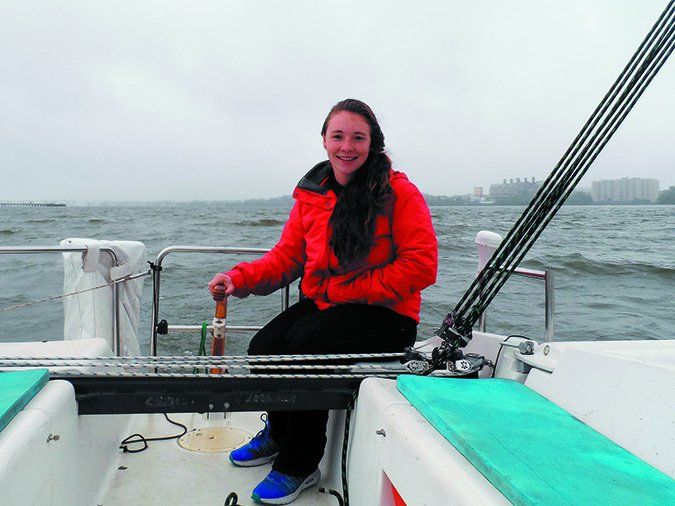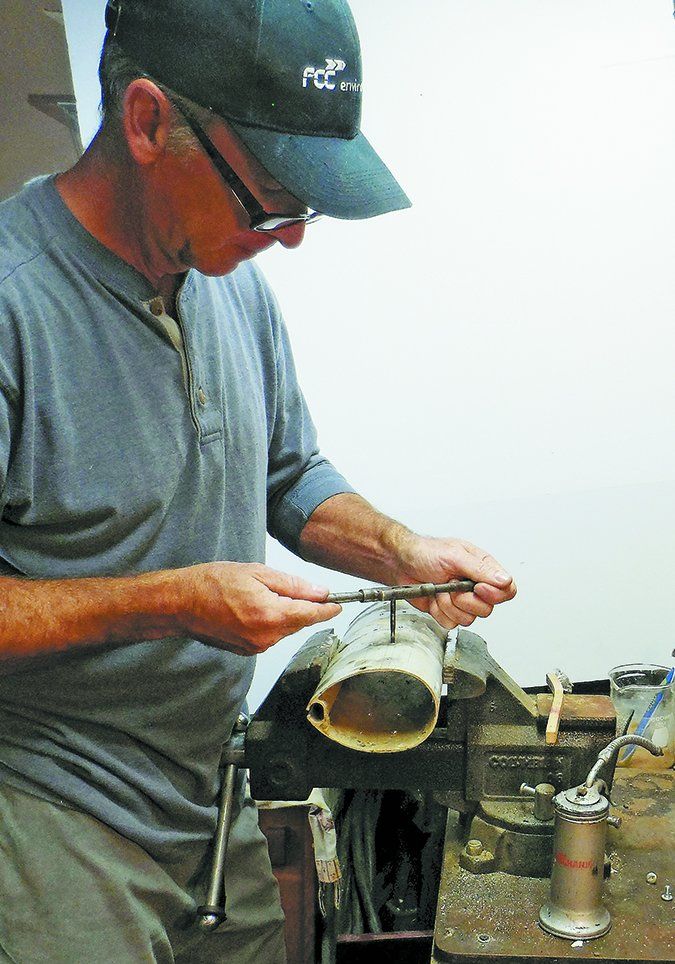The Rolling F-24
Regarding your review of the Corsair F-24 in the August 2018 issue, one of the best things about the F-24 is that it is easily trailered to remote cruising grounds. Raising the mast takes less than an hour with a good mast raising system, even in windy venues. An F-24 covers as much territory as a lot of 40 footers. With speed like that, you have a lot more options for each days destination. We can really cover a lot of territory. My 1992 F-24 Mk1 actually weighs 2,507 pounds, with outboard, empty gas tanks and all required sails and safety gear. The trailer weighs about 900 pounds. After loading it up with cruising gear, the towing weight for the boat and the trailer is about 3600 pounds. It is easily pulled by a mid-sized SUV, even in mountains. We take our dinghy with us for cruising, and store it on the side nets. We also have large dry bags for gear. During the day, we stow our sleeping gear on the side nets in the dry bag. At night, we stow our clothing there.
Judy Blumhorst
via PS Online

Drew Frye
Riveting Tips
In response to the article on tapping into spars in the September issue, periodically as part of my job, I need to drill and tap a few hundred holes or set a few hundred pop style, blind rivets. If you want to drill and tap a quality threaded hole you need to use quality tools.
Forget about carbon steel taps and drill bits. Most are junk. A decent tap in a small size will cost you $5 to $10. Likewise a proper drill bit will cost a few dollars. If you bought them at Home Depot, or Menards, etc., you likely bought an inferior product.
If you are drilling stainless you want to use cobalt alloy spiral point taps and cobalt alloy drill bits. Look for the places where professionals buy their tools.
For taps, you want a spiral-tip tap. That kind of tap pushes the chips forward of the tap into the hole, so the tap will tend not to jam.
To drill and tap aluminum, Tap Magic Aluminum is the best lubricant I have found. Much better than WD40, or 3 in 1 Oil, or any other light oil.
The most consistent way to tap a hole in thinner metal like an aluminum spar is to use a good cordless drill. Set the drills torque clutch to a low level, engage the drilled hole, and pull the trigger. The clutch will ratchet when the torque has been reached. When this happens, reverse to break the chip, put it back into forward and continue.
Before you start drilling your spar, get a piece of 6061-T6 aluminum of about the same thickness as your spar and practice. Do ten or more drill-and-tap routines and then once you are comfortable with it and then go for it.
Its very possible that if you use a spiral point tap you will run the tap fully into the hole without stopping or stalling the drill clutch. The spiral point tap is key to being able to do that. Once you get the hang of it, a cordless drill can make much more consistent tapped holes.
Using a hand-tap holder is fraught with problems. You will tend to bend the tap to the side and wallow out the hole. Using a cordless drill with a spiral tip tap makes drilling and tapping a hundred holes a realistic job. Lastly, always mark your holes with a center punch!
Regarding rivets, or more appropriately pop-style blind rivets, don’t overlook the use of a hydraulic riveter. They are run on compressed air and allow you to set steel, stainless steel and monel rivets up to -inch without problems. Once you have used one to set a number of rivets you will consider it a necessary tool.
They start at about $80 from a big discount nationwide tool store. But a good hand riveter that can set a 3/16-inch stainless rivet is not cheap either. Blind rivets are easily removed with a drill. Drill off the head and punch the back end of the rivet into the hole.
Dave Cole
via PS Online
Throwing Ropes
Regarding your report on throw ropes in the August 2018 issue, I don’t think I’ve ever been able to throw a line from a boat to the dock, another boat, or someone in the water without there being something (lifelines, boom, shrouds, or deck gear) that precludes using an underhand delivery. Unless you’re standing on a cabin top or take down your lifelines or are on a boat with no lifelines; you’ll usually have to use either an overhand or sidearm throw. Is your the suggested technique still valid using those throwing methods?
Ron Harben
Fantasia 35, Puka Kai
Morro Bay, CA
Rigging is a challenge. You can open a gate (we did for some trials). Standing on the cabin top may work for you. We also made some good tosses by coiling the line in a smaller loop and shortening our swing. Side arm is not as effective, since gravity plays tricks. The coil needs to be pitched such that the counter rotation uncoils the rope at the same speed that it is thrown. Perfected, the line reaches full extension and falls flat on the water, with no tangles. Distance comes with practice. This is an advantage of the rescue bags. They can be thrown in many different ways. But again, practice is key. Not just the skipper, the whole crew. The best advice is to go out on the water and practice! In this way you can adapt to the geometry of your boat.
Holding Tank Clogs
Regarding the PS Advisor report in the September issue, we found that the seawater/urine problems are cured by safe use of a super product recommended by Peggy Hall, the Head Mistress! It is a Raritan product called CH. Initials easy to remember by the name Cleans Hoses! This will safely dissolve the calcium deposits and makes them like new.
A repairer of the Raritan LectraSan advised us that if you use the CH you will never have to clean your hoses again. It is safe for all products in the lines and not harmful to humans when used as recommended. We have found it regularly at discount Defender.
Ed and Sue Kelly
Angel Louise, Catalac 41 Catamaran
Rockland, Maine


































